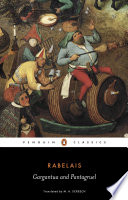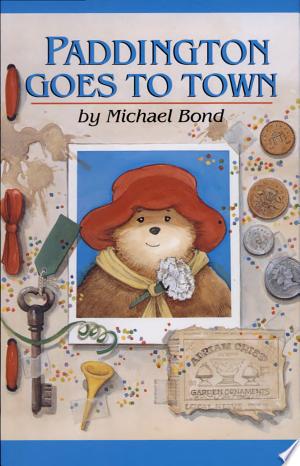Estimated read time: 8 min read
One Sentence Summary
"Gargantua and Pantagruel" is a satirical pentalogy that follows the absurd, bawdy adventures of two giants, father and son, as they explore themes of education, religion, and human nature in Renaissance France.
Table of Contents
Introduction
Step right up, dear reader, for a journey into one of the wildest, wittiest, and most outrageous classics of Renaissance literature—Gargantua and Pantagruel by François Rabelais. If you think college humor is new, wait until you meet Rabelais’ giants, their raucous adventures, and the riotous world they inhabit. Written in the 16th century, this five-part satirical saga gleefully lampoons everything from education and religion to law and politics, all under the guise of bawdy, boisterous adventure.
But don’t be fooled by the slapstick; beneath the fart jokes and food fights, Rabelais weaves sharp social critique, bold humanism, and a love of learning that’s as relevant to today’s university crowd as it was to Renaissance scholars. Whether you’re a student seeking literary mischief or a lecturer in search of insight, Gargantua and Pantagruel offers both in abundance—and with a wink.
Historical Context
Rabelais wrote during the heart of the French Renaissance, a period marked by explosive growth in science, art, and humanist philosophy. France was transforming, shaking off medieval traditions to embrace classical learning and skeptical inquiry. The Protestant Reformation and the resulting religious wars were stirring the pot, while the invention of the printing press had unleashed an information revolution.
Rabelais, himself a former monk, physician, and scholar, was both a product and a critic of his times. He drew inspiration from ancient writers like Lucian and Erasmus, blending their satirical spirit with his own anarchic imagination. The giants Gargantua and Pantagruel became vessels for both ribald entertainment and biting commentary on the absurdities of contemporary life.
Brief Synopsis
Plot Overview
Gargantua and Pantagruel is not a single novel but a series of five books chronicling the lives of two generations of giants—Gargantua and his son Pantagruel. The narrative follows their births, educations, wild adventures, and philosophical quests. Through epic battles, parodic legal cases, and surreal voyages, Rabelais lampoons the academic, religious, and political customs of his day, all while celebrating human curiosity and laughter.
Setting
The story unfolds in a fantastical version of Renaissance France, complete with enormous castles, magical lands, and improbable institutions. From the lush valleys of Utopia (yes, Rabelais uses the term!) to parody-filled universities and the mysterious "Oracle of the Holy Bottle," the setting is as elastic and eccentric as the imagination of its author.
Main Characters
Here’s a handy table to keep track of the key players in this sprawling epic:
| Name | Role | Key Traits | Importance to Plot |
|---|---|---|---|
| Gargantua | Giant, father of Pantagruel | Enormous, jolly, clever, hungry | Main protagonist of Book I; symbol of humanism |
| Pantagruel | Giant, son of Gargantua | Wise, curious, adventurous | Central hero of Books II-V |
| Panurge | Pantagruel’s companion | Cunning, witty, mischievous | Drives much of the action and comic relief |
| Friar John | Warrior-monk, friend | Feisty, loyal, irreverent | Satirical take on the clergy; martial prowess |
| Epistemon | Scholar, friend | Learned, rational, dry-witted | Offers philosophical commentary |
| King Grandgousier | Gargantua’s father | Generous, peace-loving | Model of good leadership |
| Picrochole | Enemy king | Tyrannical, impulsive | Satirizes bad rulers and pointless wars |
| The Oracle | Mystical bottle | Mysterious, enigmatic | Symbolizes the search for truth |
Plot Summary
Let’s break down the five books—each bursting with wild plots and big ideas.
Book I: The Life of Gargantua
We begin with the miraculous birth of Gargantua, who emerges from his mother’s ear after an epic gestation, immediately demanding wine. His childhood is a patchwork of outlandish pranks and prodigious appetites. Sent to Paris for an education, Gargantua endures (and satirizes) the outdated, rote-learning methods of the Sorbonne before his father finds him a more enlightened tutor.
Trouble arrives when the neighboring King Picrochole invades Grandgousier’s lands. With the help of Friar John and his merry band, Gargantua defeats Picrochole in a battle that lampoons military bluster and heroics. In the aftermath, Gargantua builds the Abbey of Thélème, a utopian monastery with the motto “Do What Thou Wilt”—a radical vision of freedom and individual development.
Book II: The Life of Pantagruel
Pantagruel, Gargantua’s son, is born even larger and hungrier than his father. His early years are spent exploring his own strength and curiosity. At university, Pantagruel assembles a diverse band of friends, including the cunning Panurge. Their adventures range from legal shenanigans to absurd duels, ever poking fun at the pretensions of scholars and judges.
Book III: Panurge’s Dilemma
This book centers on Panurge’s burning question: should he marry? The gang embarks on a series of consultations with doctors, scholars, and soothsayers, each more ridiculous than the last. Rabelais uses Panurge’s indecision to lampoon superstition, pseudo-science, and marital anxieties. Eventually, they set sail to consult the Oracle of the Holy Bottle.
Book IV: The Voyage in Search of Truth
The company embarks on a surreal, satirical voyage reminiscent of Homer, Dante, and Swift. They visit a series of bizarre islands—each a parody of some aspect of society, law, or religion. Along the way, Rabelais delights in wordplay, slapstick, and philosophical digressions.
Book V: The Oracle Revealed
The journey ends at the temple of the Oracle. After a series of mystical and comic episodes, the Oracle’s enigmatic answer ("Drink!") is revealed—a fittingly open-ended conclusion to their quest for wisdom.
Themes and Motifs
Gargantua and Pantagruel brims with themes that transcend its time:
- Education and the Life of the Mind: Rabelais advocates Renaissance humanism, favoring critical thinking and experiential learning over rote memorization.
- Satire of Authority: Institutions—church, law, monarchy—are skewered for their hypocrisy, dogma, and incompetence.
- Freedom and Utopia: The Abbey of Thélème embodies a radical vision of liberty and individual fulfillment.
- Carnivalesque Humor: Bodily functions, feasting, and slapstick abound, celebrating the earthy side of humanity.
- The Search for Truth: The quest for the Oracle satirizes the limits and absurdities of philosophical inquiry.
- Language and Wordplay: Rabelais delights in puns, neologisms, and linguistic invention, highlighting the power and slipperiness of words.
Literary Techniques and Style
Rabelais’ writing is a carnival in itself—rowdy, inventive, and joyfully subversive.
- Parody and Satire: He parodies epic poetry, legal proceedings, and religious rituals, exposing their absurdities.
- Picaresque Structure: The episodic, wandering plot allows for digressions, jokes, and philosophical asides.
- Grotesque Realism: The giants’ physicality is exaggerated, reveling in bodily humor but also making larger points about human nature.
- Rich Vocabulary: Rabelais invents words, hijacks Latin and Greek, and packs his prose with allusions, making the text a playground for language lovers.
- Dialogic Style: Dialogue dominates, giving voice to a chorus of perspectives and embodying the book’s spirit of inquiry.
Author’s Background
François Rabelais was born around 1494 in France, trained as a monk before turning to medicine, and eventually became a noted scholar and humanist. His wide-ranging knowledge—from classical languages to anatomy—informs every page of his work. Rabelais’ radical ideas often ran afoul of religious authorities; his books were condemned as obscene and heretical, yet they found a passionate audience among intellectuals.
Rabelais’ legacy endures in his celebration of curiosity, skepticism, and laughter. His influence is visible in writers as diverse as Voltaire, Jonathan Swift, James Joyce, and even modern satirists.
Key Takeaways
- Question Authority: Rabelais skewers those in power, urging readers to think for themselves.
- Celebrate Curiosity: Learning should be joyful, practical, and free from dogma.
- Embrace the Body and the Mind: Human experience is messy and glorious—both physical and intellectual.
- Laughter is Powerful: Humor is not just entertainment; it’s a tool for survival and critique.
- Pursue Truth, but Expect Ambiguity: Life’s big questions rarely have simple answers.
Reader’s Takeaway
Reading Gargantua and Pantagruel is like attending the wildest Renaissance festival you can imagine, complete with food fights, philosophical debates, and a parade of unforgettable characters. It’s a celebration of learning and laughter, a reminder that intellectual freedom is both vital and vulnerable. For students, the book encourages irreverence and curiosity; for lecturers, it’s a treasure trove of satire and pedagogy.
Most of all, Rabelais reminds us that even serious minds need a little mischief.
Conclusion
Gargantua and Pantagruel remains an exuberant feast for the mind and senses—one that invites readers to question, to laugh, and to embrace the beautiful mess of being human. Whether you’re a newcomer or a seasoned scholar, there’s always more to discover in Rabelais’ riotous pages. So pour yourself a glass, crack open the book, and join the giants on their quest for wisdom—and for a good time.
Curious? Dive in, and let Rabelais show you why laughter is the best learning of all.
Gargantua and Pantagruel FAQ
What is 'Gargantua and Pantagruel' about?
'Gargantua and Pantagruel' is a satirical series of five novels written by François Rabelais in the 16th century. The stories follow the adventures of two giants, Gargantua and his son Pantagruel, and are known for their humor, wit, and commentary on society, education, religion, and politics.
Who wrote 'Gargantua and Pantagruel'?
'Gargantua and Pantagruel' was written by François Rabelais, a French Renaissance writer, physician, and humanist.
When was 'Gargantua and Pantagruel' written?
The five books of 'Gargantua and Pantagruel' were published between 1532 and 1564.
What are the main themes of the book?
The main themes include humanism, education, satire of religious and political institutions, the celebration of bodily pleasures, and the critique of authority and dogma.
Is 'Gargantua and Pantagruel' suitable for modern readers?
Although written in the 16th century, the novel's humor, satire, and exploration of universal themes make it accessible and enjoyable for many modern readers, especially those interested in classic literature.
Is 'Gargantua and Pantagruel' difficult to read?
The language and references can be challenging due to its Renaissance origins, but many modern translations and annotated editions make the text more approachable.
What makes 'Gargantua and Pantagruel' significant in literary history?
The work is celebrated for its inventive language, imaginative storytelling, and bold satire, and it has influenced countless writers and thinkers throughout history.
What kind of humor is used in 'Gargantua and Pantagruel'?
Rabelais employs bawdy, absurd, and often scatological humor, along with clever wordplay and parody.
Do I need to read all five books to understand the story?
While each book can be read separately, reading them in order provides a fuller understanding of the characters, themes, and overarching narrative.
What are some key characters besides Gargantua and Pantagruel?
Notable characters include Panurge, Pantagruel's witty companion, Friar John, and various scholars, kings, and fantastical beings encountered throughout their adventures.





